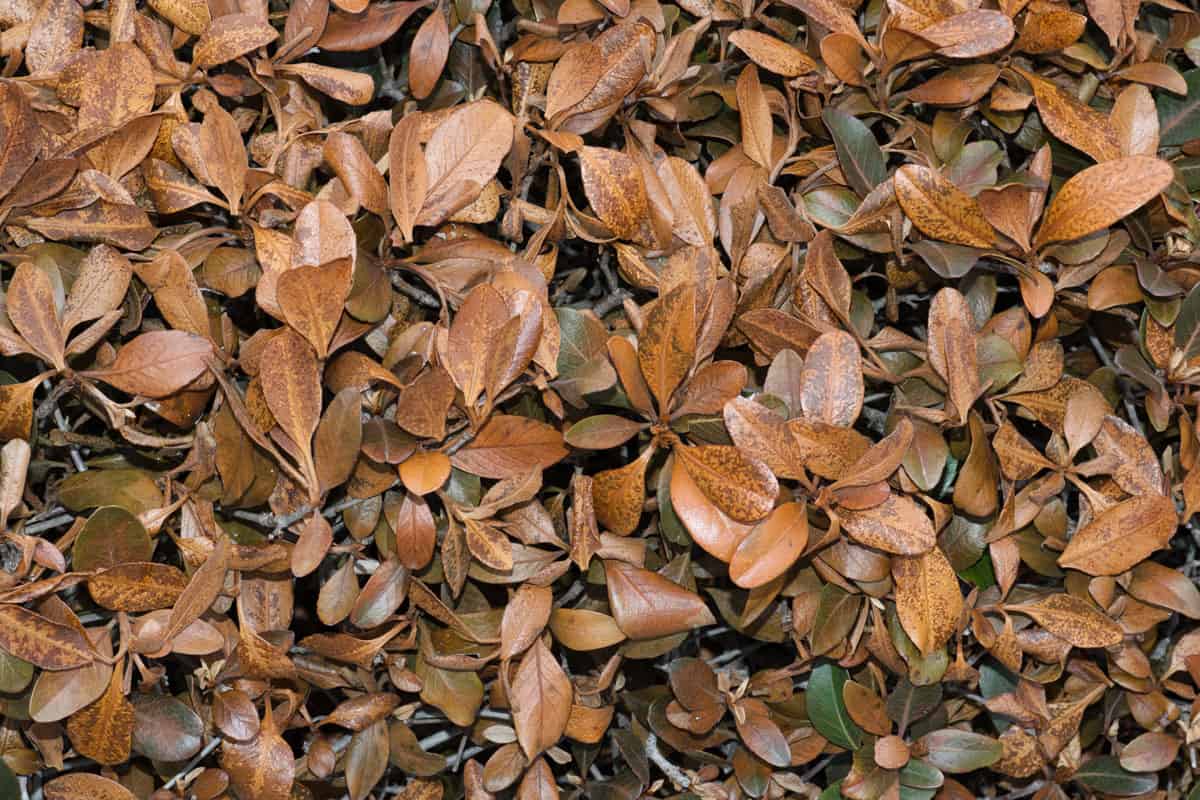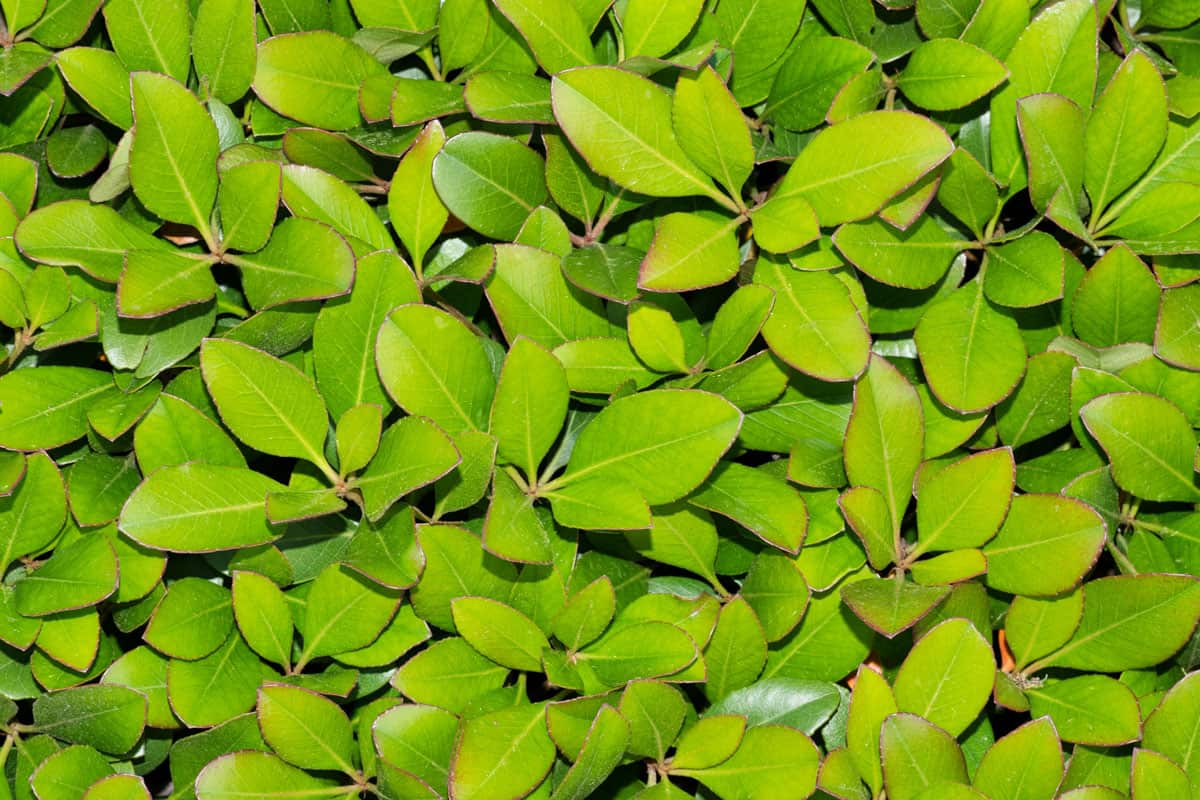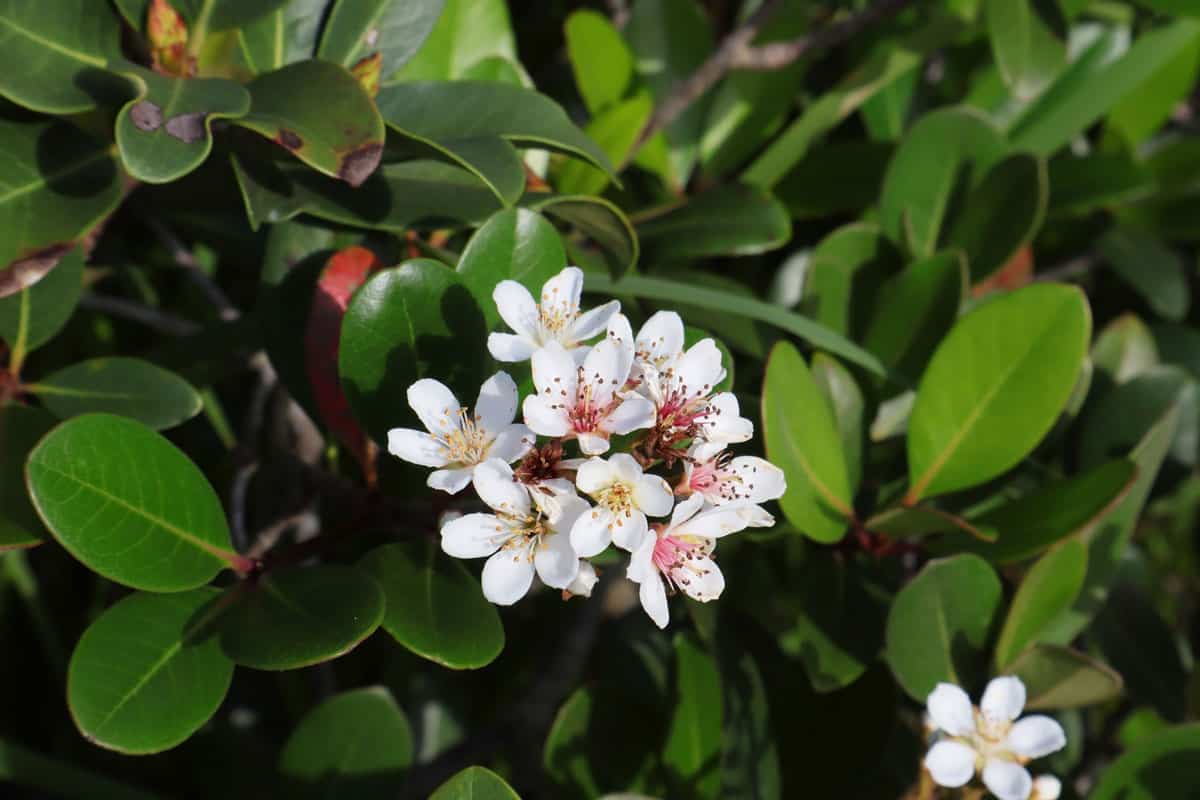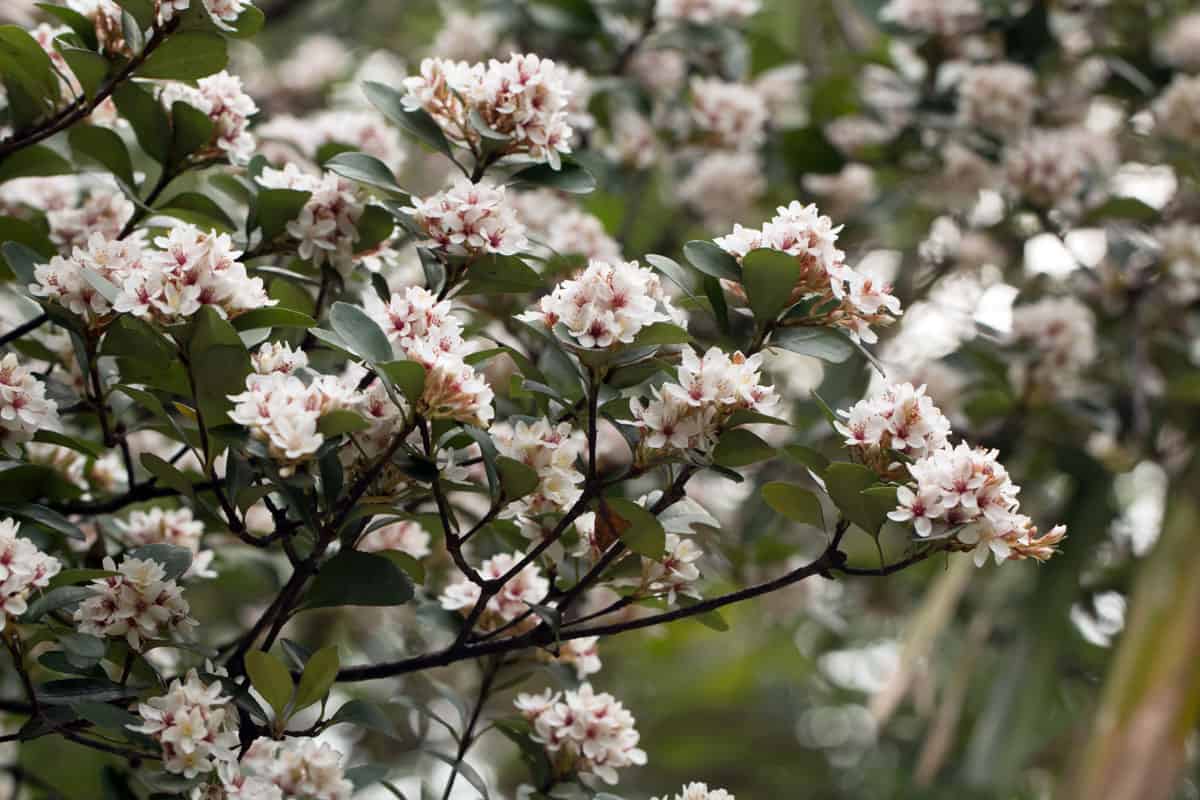Like all other plants, the coming winter makes you worry if your delicate Indian hawthorns will endure the cold. The freezing of the plants can be a threat to their growth. In this article, we will share what we researched to help you care for your frozen Indian hawthorns.
An Indian hawthorn can survive a freeze if its bark is still alive. However, prolonged exposure to freezing temperatures will cause winter injuries. The plant can experience loss of leaves, brittle twigs, split bark, and fungal disease.
If you have the hawthorn in your garden, you should prepare for the winter. You need to protect it from freezing so that you don't lose the evergreen foliage and clusters of flowers. Read further to learn what to do to avoid frozen Indian hawthorns.

Will Indian Hawthorns Outlast A Freeze?
Indian hawthorns can survive a freeze, but there will be varying tolerance levels.
There are varieties of Indian hawthorn that are cold-hardy between US hardy zones 7 to 10. The plants might not survive a cold spell if your zone is below this range. If the temperature falls below -12 to -9° Celsius, the plant can experience cold injuries.
Here are the cold-hardy varieties:
- Blueberry Muffin - A very cold-hardy variety with good resistance to rot and disease.
- Eskimo - It can tolerate up to -15° Celsius and resists leaf spotting. You can plant this in zone 7b.
- Georgia Charm - Like the Eskimo, it can also survive temperature until -15° Celsius.
- Georgia Petite - It has the same tolerance as the previous varieties, but it is only a small shrub.
Although these varieties can endure low temperatures, long exposure to harsh winters can kill the plant. You should not push the limits of the hawthorns because it is a loss for your garden. It might not be able to produce leaves and blooms in the next season.
The plants might recover when subjected to few and light freezes, but that is still not a guarantee. You should check vital parts of the plant, especially the bark, for signs of life.
Even if cold-hardy, that does not mean the hawthorn flower buds can bear the freeze. Open flowers are more sensitive than closed buds. Flowers will easily wilt and fall off, while closed buds can survive.
The winter of 2014-2015 was severe for Indian hawthorns in South Carolina. The plants died due to improper use of fertilizers, weed killers, and irrigation.
Continue reading to know what happens to frozen Indian hawthorns.
What Happens To Indian Hawthorn When It Freezes?
The freeze will cause injury to your Indian hawthorns. The plant can either survive or die depending on the severity of winter damage.
These are the signs of winter injury for Indian Hawthorns:
- Split bark at the crown of the shrub or along the trunk
- Wilted and discolored leaves (colored brown to black)
- Dry and brittle leaves
- Frost cracks on the trunk
- Flowers fall off
- Leaf spotting and root rot

Instead of a lush dark green color, the leaves can turn into shades of purple or blue-green when subjected to cold temperatures. These leaves will turn to dark and dry leaves, which is an alarming sign that the plant is dead.
Sadly, if the winter is harsh and unusually long, the Indian hawthorns can die. Multiple signs of injuries can be difficult to revive the plant.
If you see that the hawthorns survived, you should learn what to do after the freeze.
What To Do When Indian Hawthorn Freeze?
After winter passes, you should immediately discard the fallen and diseased leaves. By doing so, you can prevent fungal spores that cause entomosporium leafspot. Do not mix the discarded diseased leaves with compost to avoid spreading to other plants.
Check for green matter underneath the bark. Scratch a portion of the bark with a knife or your fingernail. If the tissue is green and moist, you can wait until it produces leaves in spring.
Cut back the plant above the portion not affected by disease and where there is a sign of life. If the plant has a few dead parts (i.e., discolored, dry, and brittle stems), prune them. Leave around 6 to 8 inches between the foliage and the ground.
Yet, if the plant is totally dead after checking it, you should uproot it and leave the space for new growth.
Read from this post: When Should You Cut Back Hawthorn Trees?
Can The Indian Hawthorn Grow After A Freeze?

The Indian hawthorns can grow after the freeze. The hawthorns will grow back leaves if the bark is still alive.
It is best to leave the plant after the freeze without too much intervention to allow growth. You must remove the dead and diseased parts as soon as possible. The fungal spores can spread to other healthy parts.
You should avoid disposing of healthy buds and stems when pruning the lifeless parts. If you do, you might slow down or halt the production of flowers and foliage.
The leaves will regrow after several weeks nearing the spring. Just wait for the plant to regain its energy in spring before taking further action. Ensure that the plant is under the full sun to allow blooming.
How To Make Indian Hawthorns Bloom After Winter?
Indian hawthorns have red, pink, or white flowers that start blooming in spring thru the fall. You must preserve the healthy flower buds that will open from mid-April to May.
Aside from flowers, the plant has dark-blue to black berries that grow from winter to spring. These clusters are attractive to animals, while some varieties can be poisonous.
Also, be mindful of the fertilizer you provide to the hawthorn. Give a slow-release fertilizer suitable for shrubs in the spring instead of the summer. Too much nitrogen from the fertilizer will slow down blooming.
The Indian hawthorns should have at least 6 hours of full sun to help them produce blooms and foliage.
Moreover, do not over-prune the plant. Just prune every 2 to 3 years. Too frequent pruning will make fewer flowers.
Do You Need To Transplant Indian Hawthorns In Winter?
You can transplant the Indian hawthorns in winter or early spring. Transplanting is good when the growing season begins. It is not advisable to transplant them during summer.
Follow the steps on how to transplant below:
- Before transplanting, prepare the site where you plan to transplant.
- Once you find the right location, dig a hole as deep as the root ball on the chosen site.
- Drench the soil with water a day before placing the plant.
- Settle in the root ball on the hole, making the top of the roots level with the soil.
- Fill in soil around the root ball.
Tips To Prevent Indian Hawthorns From Freezing

Retain the beauty and abundance of Indian hawthorns in your garden by maintaining their condition for all seasons.
Winter care for the plant is mandatory if you live in sub-freezing winter temperatures. You should check your US hardiness zone if suitable for growing Indian hawthorns.
If you plant cold-tolerant cultivars of Indian hawthorns, they can manage the freeze well. Yet, it is not a guarantee. You should not rely on the plant's cold hardiness and let it manage itself.
You can protect the Indian hawthorns during winter by taking note of these tips:
- Stop adding fertilizers during the fall to avoid cold injury.
- Add some mulch to the base of the plant to warm up the roots.
- Cover the plant with some breathable cloth or burlap before the temperatures drop.
- Give the plant enough water in the fall.
- Prepare well-drained soil for the plant. Avoid stagnating water to avoid root rots.
- Do not over-prune the plant to avoid cutting off healthy parts.
You should be proactive rather than solving the issues when your Indian hawthorns have frozen. Being prepared will make your gardening experience easier.
In Summary

Most Indian hawthorns can survive a freeze with the right care. Some varieties are cold-hardy, but there is no guarantee against cold injuries. Freezing also affects the flowers and buds that are essential for reproduction.
You need to wait for the plant to recover before pruning it. Only discard the lifeless and diseased parts to avoid diseases. The Indian hawthorns will bloom in spring if you don't prune the healthy buds.
The plant can die with long exposure to below-freezing temperatures. The signs will show in split bark and browned leaves. If you see that the plant is dead, you should take it out from the ground and prepare for new growth.
With the right care, your Indian hawthorns will survive the freeze.
For more information about hawthorns, you can read these posts:
